Battle of Chickamauga
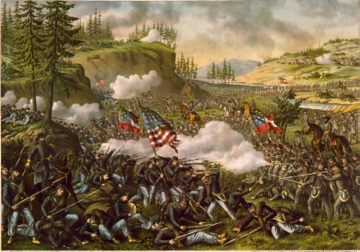
Battle of Chickamauga--Sept. 19' & 20' 1863 Kurz and Allison
The Army of the Cumberland advanced all the way to Chattanooga, without encountering any serious opposition from the retreating forces of General Bragg. General Rosencrans, the Union commander, ordered the Union forces to continue after the Confederate forces south of the city. There, they were attacked by Bragg, who was reinforced by the troops of General Longstreet. In the ensuing battle, which was the bloodiest of the Western theater, Longstreet's soldiers attacked a gap in the Union lines, causing a third of the Union army to stream back to Chattanooga. Forces under General Thomas regrouped and held off the Confederate forces for the remainder of the day allowing an organized retreat for the remaining forces.
Rosencrans successfully forced Confederate General Bragg out of Central Tennessee. After a number of successful flanking movements by Union forces, Bragg was forced to withdraw from Manchester and then all the way back to Chattanooga. Rosencrans and the Army of the Cumberland continued after Bragg to Chattanooga. There they again out maneuvered Bragg and crossed the river to the South of Chattanooga, not to the North as Bragg was expecting. The Union army cut the railroads from Atlanta, and thus forced Bragg to withdraw from Chattanooga. The city with its vital rail links fell without a shot being fired. Rosencrans however, was becoming overconfident, while Bragg was being reinforced. The Union army continued from Chattanooga in pursuit of Bragg's army in three separate columns. Bragg was waiting for Rosecrans' in mountains outside town; waiting to spring a trap on Rosencrans unsuspecting columns. Unfortunately for Bragg his subordinates did not attack when they were ordered to. Rosencrans realized how vulnerable his split forces were, and ordered them to concentrate in the valley of the West Chickamauga Creek.
On the morning of the 19th of September 1863 the bloodiest battle of the Western campaign began. Bragg began attacking the union left flank. All day the sides fought, with very little movement, in the dense thicket of the Chickamauga devastating casualties were suffered by both sides. That night Bragg's long awaited reinforcements arrived. General Longstreet with 12,000 veterans of the campaign in Virginia arrived and went right into the battle. On the morning of the 20th Bragg ordered Polk to attack on the right with Longstreet to follow on the left. Polk made no serious advance against Thomas forces on the left. At 11:30 Longstreet attacked with all his forces. He succeeded in breaking through a gap in the Union lines. As the gap grew Union forces retreated in disarray. Among those who retreated was Rosencrans. Luckily for the Union forces, Thomas organized a last ditch defense with the Union troops that did not retreat. The defense which lasted until nightfall earned Thomas the title- Rock of Chickamauga. It also allowed his forces to make an orderly withdrawal to Chattanooga that night. Bragg was urged by his subordinates to follow up with an attack on Chattanooga, but he refused deciding instead to begin a siege of the city instead.
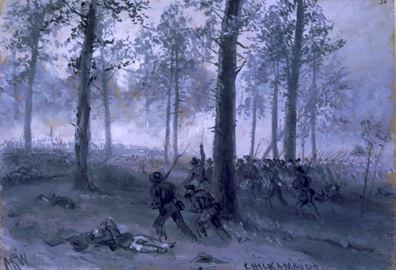
Confederate Advance at Chickamauga
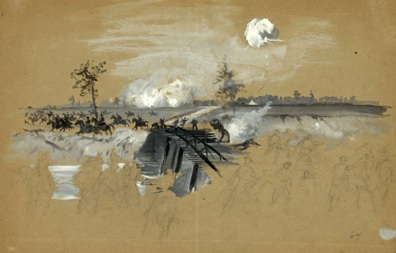
Confederate artillery opening fire upon the Union calvary, who had begun destruction
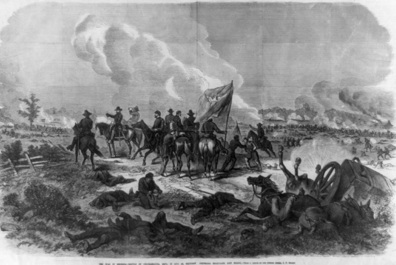
Battle of Chickamauga, Sept. 19 and 20, between Generals Rosecrans and Bragg / from a sketch by our special artist J.F. Hillen
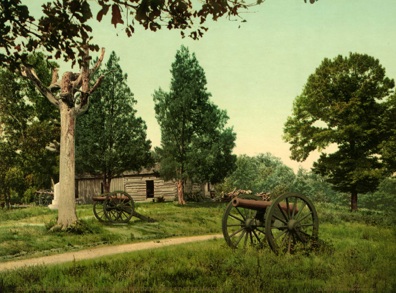
 >
>